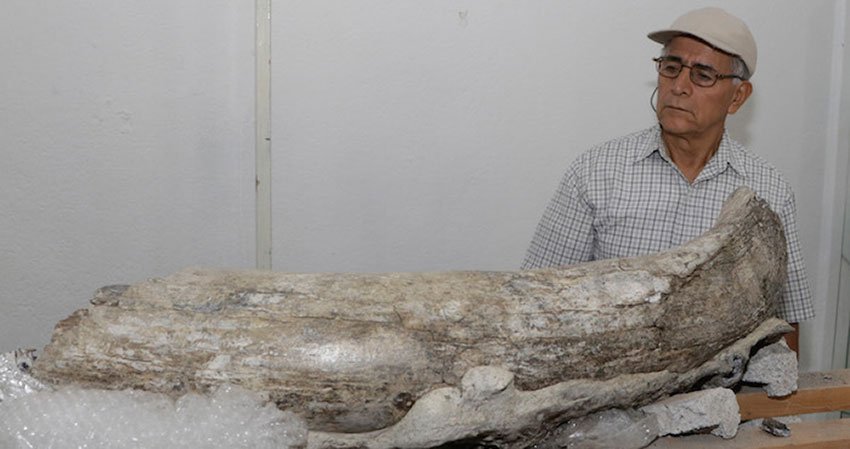Mammoth tusks, a camel skull and the fang of a giant wolf are among a range of Ice Age fossils recently discovered in Puebla.
Residents of Chietla, a neighborhood in the municipality of Puebla 45 minutes from the state capital’s city center, have discovered dozens of fossils near the Chiquihuitepec hill in the Alseseca river basin area.
The discoveries, which also include handmade weapons such as lances, are believed to belong to the late Pleistocene era, or Ice Age, which ended around 11,700 years ago.
The fossils were formally presented yesterday by the Tepalcayotl Association, a non-profit group dedicated to the conservation of ancient cultures and traditions.
Association secretary Héctor Aguilar Rosas said the discoveries have been made during the past one and a half years.

“Different pieces continue to be found. Some residents have them at their homes. The truth is we don’t have a complete register of the finds,” he said.
However, many of the fossils have been transferred to a municipal government office for safekeeping, Aguilar said, adding that some of the remains are of a Columbian mammoth “that could have lived 14,000 years ago.”
He explained that some of the pieces, which also included ribs, vertebrae and teeth, have arrowhead indentations.
Tepalcayotl president José Rosendo Muñoz Chetla said he will seek financial support from the National Institute of Anthropology and History as well as state and municipal authorities to build a new museum to house the fossils in the area where they were found.
Residents are also calling for the restoration of the Tepalcayotl archaeological area as well as pre-Hispanic settlements located near the Chiquihuitepec hill that are believed to have once been occupied by the Olmec and Chichimeca peoples.
Source: Milenio (sp), Sin Embargo (sp)
